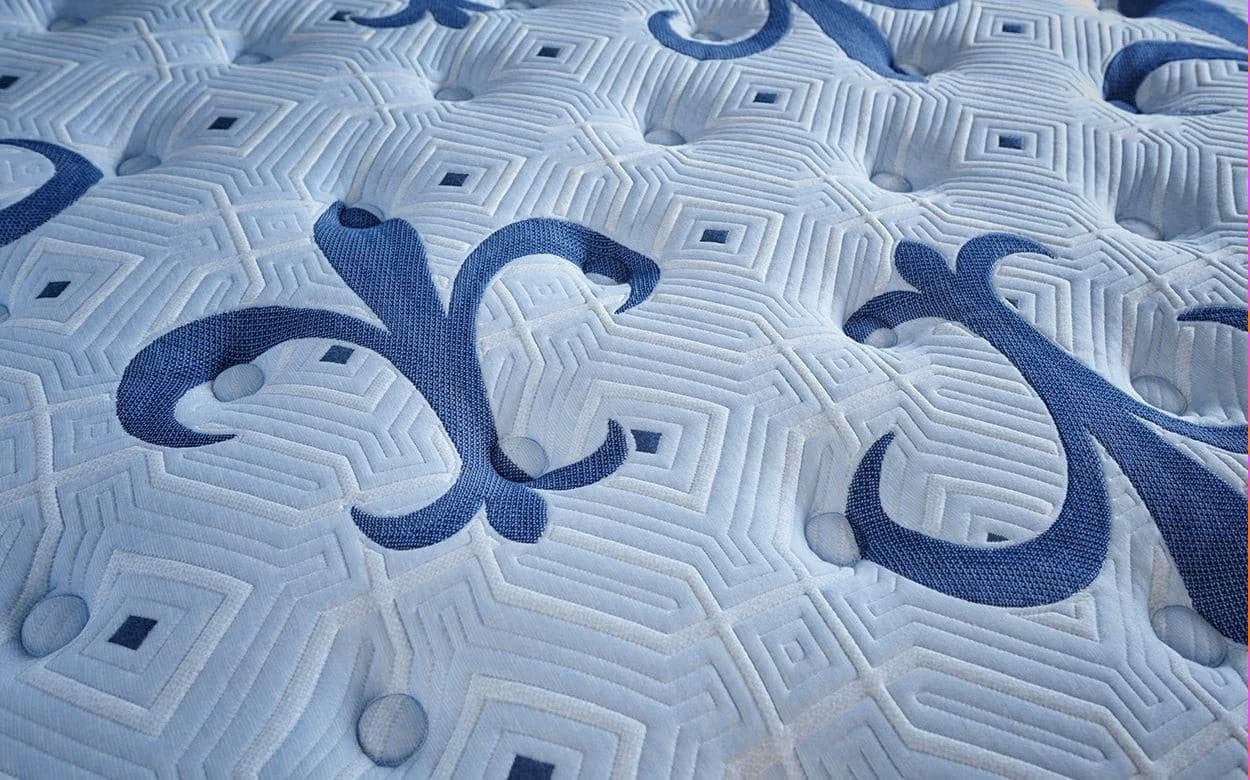Foam mattresses, whether made from memory foam, latex foam, or polyurethane, are celebrated for their comfort, contouring support, and durability. However, one challenge many mattress owners face is mold and mildew growth. Unlike innerspring mattresses, foam’s dense structure can trap moisture, creating an ideal breeding ground for these harmful fungi.
Mold and mildew not only damage your mattress but can also lead to serious health issues, including respiratory problems, allergies, and skin irritation. Preventing mold from forming in the first place is far easier (and more cost-effective) than trying to remove it once it’s taken hold.
In this guide, we’ll explore practical, science-backed methods to keep your foam mattress mold-free, from proper ventilation and humidity control to smart cleaning routines and protective accessories.
Table of Content
- Introduction
- Key Takeaways
- Why Foam Mattresses Are Prone to Mold & Mildew
- Warning Signs of Mold Growth
- Best Practices for Mold Prevention
- Comparison Table
- Visual Graph
- Product Review: Recommended Mattress Protector
- Conclusion
- Frequently Asked Questions
Key Takeaways
- Foam mattresses are highly susceptible to mold due to their ability to trap moisture.
- The main causes are poor ventilation, high humidity, and spills that aren’t properly dried.
- Prevention is easier than removal implementing proactive measures saves both money and health risks.
- Use breathable protectors, proper bed bases, and dehumidifiers to minimize mold risk.
-
Regular maintenance, including rotating, airing out, and cleaning the mattress, significantly extends its lifespan.
Why Foam Mattresses Are Prone to Mold & Mildew
Foam mattresses are made from dense materials that absorb and retain moisture. Factors contributing to mold growth include:
l High humidity environments (above 60% relative humidity)
l Inadequate airflow beneath the bed
l Liquid spills that aren’t quickly dried
l Sleeping directly on the mattress without protective layers
Mold thrives in dark, warm, and damp environments exactly the conditions found in an unprotected foam mattress in a poorly ventilated room.
Warning Signs of Mold Growth
Spotting mold early is crucial to preventing long-term damage. Look out for:
l Black, green, or white spots on the mattress surface or underside
l Increased allergy or asthma symptoms
l Discoloration or unusual stains
If you notice these signs, it’s important to act quickly to clean or replace the mattress before the mold spreads.
Best Practices for Mold Prevention
1. Use Breathable Mattress Protectors
A breathable, waterproof mattress protector acts as the first line of defense. Unlike plastic covers, breathable protectors allow airflow while preventing liquid penetration.
Benefits:
l Prevents sweat, spills, and body oils from soaking into the foam
l Improves airflow to reduce trapped humidity
l Easily removable and machine-washable
2. Ensure Proper Ventilation
Adequate airflow beneath and around your mattress helps moisture evaporate before mold can develop.
Tips:
l Avoid placing mattresses directly on the floor
l Use a slatted bed base instead of a solid one
l Keep at least 2–3 inches of space between the mattress and walls
3. Maintain Indoor Humidity Levels
Mold thrives when humidity exceeds 60%.
Solutions:
l Use a dehumidifier in high-humidity climates
l Keep bedroom windows open during dry weather
l Use an air conditioner in summer months
4. Rotate and Air Out the Mattress
Rotating the mattress every 3–6 months ensures even wear and prevents one area from becoming a moisture trap.
Extra Tip:
On sunny days, strip the bedding and place the mattress near a window for natural UV light exposure, which helps kill mold spores.
5. Choose the Right Bed Base
Your bed frame can significantly impact mold prevention.
Best Choices:
l Slatted frames: Allow airflow and reduce moisture buildup
l Platform beds with ventilation holes: Improve breathability
l Avoid solid box foundations: These restrict airflow and trap moisture
6. Clean Regularly and Safely
Vacuum your mattress with a HEPA filter attachment every few months to remove dust and allergens. For deeper cleaning:
l Use a mild vinegar-and-water solution for spot cleaning
l Avoid soaking the foam excess moisture can cause more harm than good
l Let the mattress dry completely before putting bedding back on
Comparison Table: Prevention Methods
Prevention Method |
Effectiveness |
Ease of Implementation |
Estimated Cost |
|
Breathable Mattress Protector |
High |
High |
$30–$80 |
|
Regular Sunlight Exposure |
High |
Medium |
Free |
|
Dehumidifier Usage |
Medium |
Medium |
$150–$250 |
|
Rotating Mattress |
Medium |
High |
Free |
|
Proper Bed Base with Ventilation |
High |
Medium |
$100–$300 |
Graph: Support vs Cooling vs Density in Foam Mattresses

Product Review: SafeRest Premium Breathable Mattress Protector
1. Mattress Safeguard Completely Encased Zippered Mattress Protector (14–18")
Overview
This protector offers full 360° encasement with a zipper, providing comprehensive protection from liquids, allergens, bed bugs, dust mites, mildew, and mold. Constructed from 100% polyester knit, it remains breathable and is machine-washable. Designed to fit mattresses with a depth of 14″ to 18″.
Key Features
l Complete zipper encasement for full mattress protection
l Fabric barrier repels liquids and allergens (bed bugs, dust mites, mildew)
l Breathable 100% polyester knit
l Machine-washable
l Fits deeper mattresses (14–18″)
|
Pros |
Cons |
|
Offers total encasement for maximum protection |
More difficult to install due to full zip design |
|
Shields effectively against allergens and liquids |
Higher price point than standard protectors |
|
Breathable despite being waterproof |
May feel slightly bulkier than fitted protectors |
2. Mattress Safeguard Standard Mattress Protector (10–14")
Overview
A more traditional fitted-style protector with impermeable barrier, offering protection against perspiration, bedwetting, allergens, and microbial growth such as mold and mildew. It's waterproof, hypoallergenic, and crafted for 10″–14″ mattresses.
Key Features
l Waterproof and impermeable to liquids
l Hypoallergenic: blocks dust mites, allergens, bacteria, mildew, and mold
l Machine-washable
l Designed for standard-depth mattresses (10–14″)
|
Pros |
Cons |
|
Effective protection against moisture & allergens |
Exposed edges (not fully encased) |
|
Hypoallergenic and waterproof |
Limited to smaller mattress depths |
|
Easier to install like a fitted sheet |
May not cover bed bugs fully due to open bottom |
Conclusion
Preventing mold and mildew in your foam mattress boils down to proactive care. By maintaining airflow, controlling humidity, and using protective accessories, you can extend your mattress’s lifespan by years while safeguarding your health.
If you live in a humid climate, investing in a breathable protector and a dehumidifier will give you the best long-term results. For those in drier climates, regular sunlight exposure and rotation may be enough to keep your mattress mold-free.
Frequently Asked Questions
1. Can mold be completely removed from a foam mattress?
Not always severe mold infestations may require replacing the mattress for safety.
2. How often should I air out my foam mattress?
Every 1–2 months, or more frequently in humid conditions.
3. Is a mattress protector enough to prevent mold?
It helps significantly but should be combined with good ventilation and humidity control.
4. Can I place my foam mattress directly on the floor?
No, it traps moisture and encourages mold growth.
5. What’s the best humidity level to prevent mold?
Keep indoor humidity below 60% ideally between 40–50%.
6. Do latex foam mattresses resist mold better than memory foam?
Yes, latex is naturally more resistant but still needs proper care.
7. Can mold in a mattress cause health problems?
Yes, it can trigger allergies, asthma, and other respiratory issues.
8. Should I use baking soda to prevent mold?
Yes, sprinkling baking soda on the mattress can help absorb moisture and odors.
9. How do I know if my bed base is mold-friendly?
Look for slatted or ventilated designs that allow airflow.
10. Is sunlight exposure safe for all foam mattresses?
Yes, but avoid prolonged UV exposure that could damage fabrics 1–2 hours is enough.


